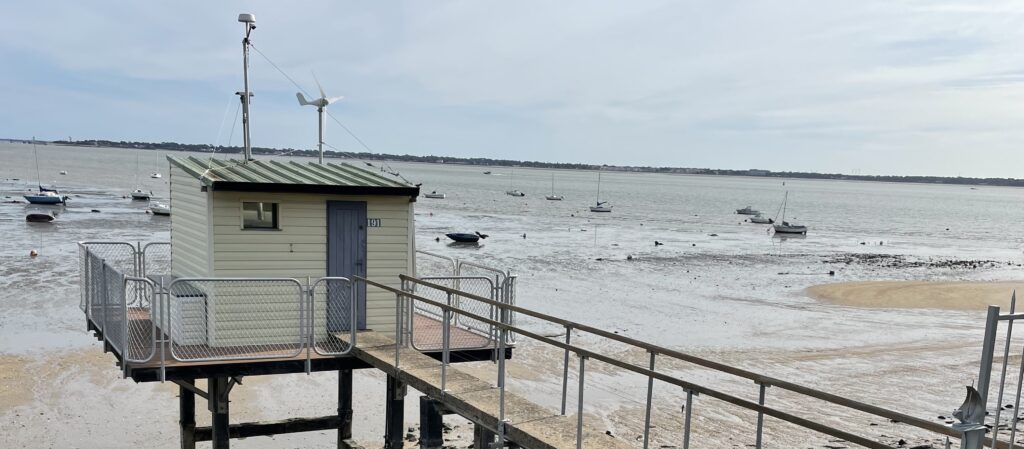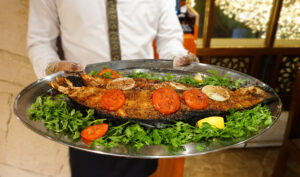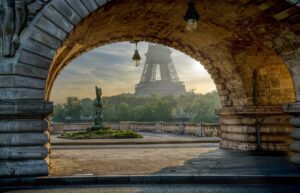There’s a reason why France is the most visited country in the world. Paris may be its marquee destination, with the Eiffel Tower, Notre Dame Cathedral, and Palace of Versailles ranking among the top tourist attractions in the world. But France is so much more than its capital city. It’s home to seaside villages and mountain towns. Medieval cities and modern hamlets. And as much as I love Paris, I also love exploring the rest of France. Thankfully, with this country’s extensive train system, it’s easy to go away for a weekend and discover a new place. Cast in point, my recent weekend getaway to Saint-Nazaire.
Napoleon III’s Industrial Town
Saint-Nazaire is a harbour town located on the west of France in Brittany. It was part of the Duchy of Brittany until 1532, when it was annexed by France, and for most of its history, it was a small and mostly unimportant village. As recently as the 18th century, it was home to just 600 inhabitants. By 1800, its population had grown to 3,216, but it was during the reign of Napoleon III that Saint-Nazaire’s fortunes (and population) boomed. This was because starting in the mid-19th century, Saint-Nazaire was transformed into a thriving industrial port. The primary industry was shipbuilding, and the Chantiers de l’Atlantique shipyard quickly became one of the largest and most renowned shipyards in the world. It’s still in operation today, producing some of the largest ocean liners in history.
A Target For Two World Wars
Unfortunately, Saint-Nazaire became a focal point of activity during both world wars due to its strategic location at the mouth of the Loire River. In World War I, Saint-Nazaire became the primary disembarkment point for the Allies, including the American troops starting in 1917. In World War II, Saint-Nazaire became the base of operations for the German Navy. Its dry dock was the only port large enough to service many of the German battleships, and the city became the centre of U-Boat operations throughout the war. Because of this, Saint-Nazaire was the target of many attacks, bombing campaigns, and air raids by the Allies, resulting in extensive damage to the city.
After the D-Day landings in Normandy on June 6th, 1944, France was steadily liberated over the following months. However, in Saint-Nazaire, the German troops stationed there took refuge in the massive submarine base they had built in the port, and used this fortress to continue to hold the city. It wasn’t until Germany’s surrender and the end of the war in Europe that Saint-Nazaire finally came back under French control on May 8th, 1945. The French Navy moved in, and the city was rebuilt between 1945 and 1948.
A Lovely Seaside Getaway
If you’re looking for cobblestoned alleyways and medieval buildings, Saint-Nazaire should not be on your list of destinations. But if you’re looking for a lovely seaside getaway, Saint-Nazaire is a wonderful option. As mentioned above, the Chantiers de l’Atlantique shipyard is still in use, with tours available for those interested in its operations. There is also a submarine museum where you can walk through an actual, decommissioned submarine, which was a first for me. And if submarines and shipyards aren’t your thing, there is a local history museum, outdoor sculptures and art museums, and miles of beachfront to explore, including a whole stretch of traditional fishing huts.
Saint-Nazaire is certainly not the most well known tourist destination in Brittany. It’s often overshadowed by the more famous cities of Rennes, Nantes, and Saint-Malo. But in my opinion, it is the perfect weekend getaway, filled with interesting sites, great food, lovely and kind people, and the smell of the ocean. What more could you want?
Laura Moore is a professional storyteller who loves history and the many stories that make Paris one of the most fascinating cities in the world. Join one of her signature tours to learn the story of a city.




